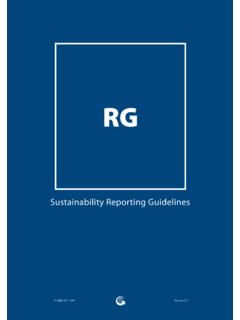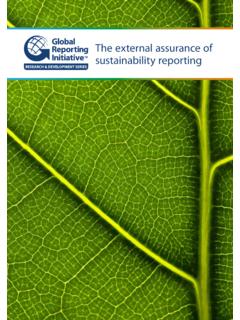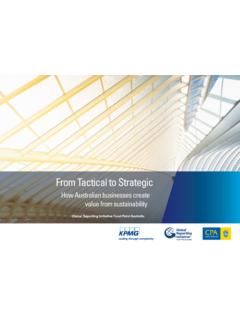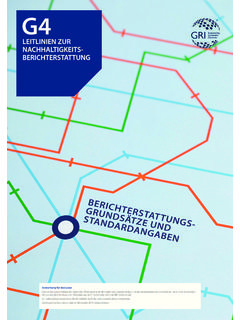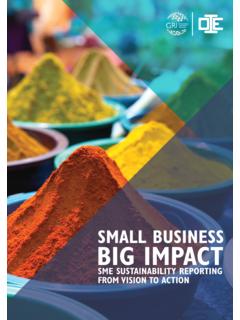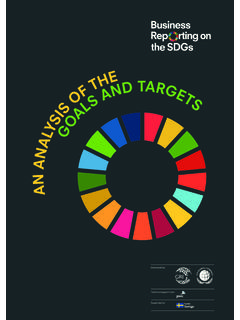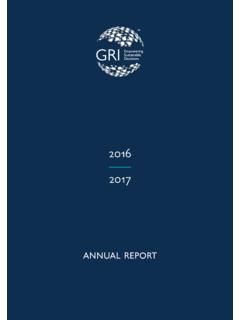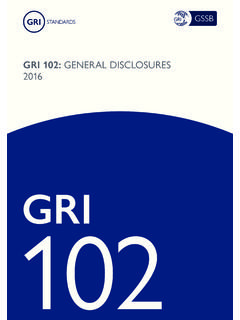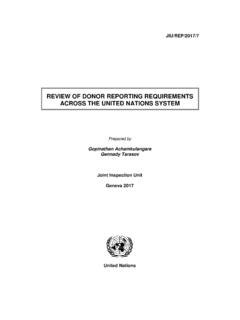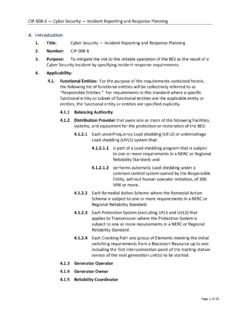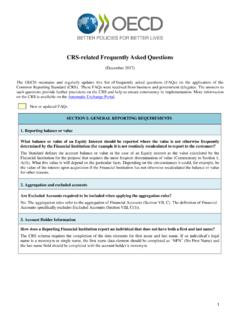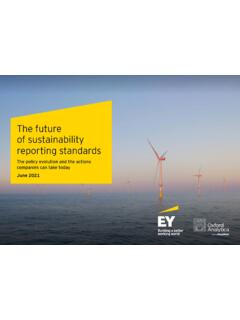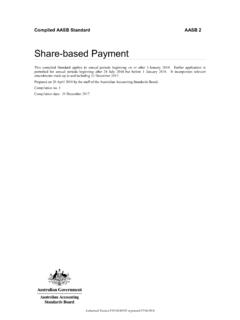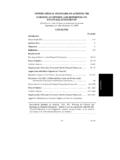Transcription of A Practical Guide to Sustainability Reporting Using GRI ...
1 REPORTPRODUCED BY GRI AND SASB, WITH SUPPORT FROM PWC, THE IMPACT MANAGEMENT PROJECT, AND CLIMATEWORKS FOUNDATIONA Practical Guide to Sustainability Reporting Using GRI and SASB StandardsCopyright 2021 The information, text, and graphics in this publication (the Content ) are owned by The SASB Foundation and the Global Reporting Initiative (GRI). All rights reserved. The Content may be used only for non-commercial, informational, or scholarly use, provided that all copyright and other proprietary notices related to the Content are kept intact, and that no modifications are made to the Content. The Content may not be otherwise disseminated, distributed, republished, reproduced, or modified without the prior written permission of The SASB Foundation and GRI.
2 To request permission, please contact us at or Sustainability Accounting standards Board 1045 Sansome Street, Suite 450 San Francisco, CA 94111 Reporting InitiativePO Box 100391001 EAAmsterdamThe INVOLVEDG lobal Reporting Initiative (GRI) is the independent, international organization that helps businesses and other organizations take responsibility for their impacts, by providing them with the global common language to communicate those impacts. We provide the world s most widely used standards for Sustainability Reporting the GRI standards . Headquartered in Amsterdam, the Netherlands, we have a network of seven regional hubs ensuring we can support organizations and stake-holders worldwide. You can download the standards and find supporting materials at Sustainability Accounting standards Board (SASB) connects businesses and investors on the financial impacts of Sustainability .
3 SASB standards enable businesses around the world to identify, manage, and communicate financially material Sustainability information to investors. SASB standards are industry-specific and are designed to be decision-useful for investors and cost-effective for companies. They are developed Using a process that is evidence based and market informed. To download any of the 77 industry-specific standards , or learn more about SASB, please visit YOUGRI and SASB would like to thank the ClimateWorks Foundation for their generous support of this joint publication and PwC and the Impact Management project for their assistance. GRI and SASB would also like to thank the interviewees and survey respondents who contributed to this Foreword 4 Introduction 5 Part 1: The Broad View 10 Part 2: Audiences and Channels 12 Part 3: Use of the GRI and SASB standards 22 Part 4: Organization s Approaches to Reporting 25 Part 5: Benefits and Challenges 37 Part 6: Advice for Reporting Organizations 38 Part 7.
4 Increasing Importance of Sustainability Information 40 Resources 41 4 GLOBAL Reporting INITIATIVE / Sustainability ACCOUNTING standards BOARDA Practical Guide TO Sustainability Reporting Using GRI AND SASB STANDARDSF orewordEric Hespenheide, Chairman, GRI Board of Directors Janine Guillot, CEO, SASB The attention on how companies manage and communi-cate their Sustainability impacts has never been greater. In response to the growing interest of various stakeholders in how companies are managing their impacts, Sustainability Reporting has continued to grow rapidly. At the same time, the range of impacts that stakeholders seek to better under-stand has also continued to evolve. Most recently, we have seen additional focus on many different issues, from the impacts of business on nature, to persistent issues around inequality be it economic, racial or gender inequality to the accelerating impacts of climate change.
5 Clearly and accurately communicating these impacts through Sustainability Reporting provides multiple stake-holders with information they can use to understand and evaluate the performance of companies on a wide range of issues and inform their assessments and decision-making processes. As the demand for Sustainability information grows among stakeholder groups, standards provide value in ensuring both those Reporting the information and those Using the information are speaking the same defines Sustainability Reporting as the practice of companies disclosing the most significant economic, environmental and social impacts that arise from their corporate activities, and thereby being held accountable for these impacts and responsible for managing them. The GRI standards offers organizations a global common language for communicating their impacts on people and planet in a comprehensive and consistent way one that responds to the needs of all stakeholders and enables any company to be transparent about how it contributes to sustainable development.
6 The impacts that a company has on its stakeholders can also present risks and opportunities to the organization itself, including implications for a company s financial performance and long-term enterprise value. For this reason, investors have become increasingly interested in Sustainability information. SASB focuses on this connec-tion between businesses and investors, on the financial impacts of Sustainability and, specifically, on how sustain-ability issues can create or erode enterprise value. As a complement to the GRI standards , SASB standards help companies communicate effectively with investors about performance on the subset of industry-specific sustain-ability issues that are most relevant to risk, return and long-term enterprise and SASB have been working together to support companies that want to communicate with their various stakeholders Using both the GRI standards and SASB standards .
7 In this publication we highlight the ways in which companies are already Using the two sets of standards together, demonstrate the complementary nature of the GRI and SASB standards , and provide reporters with valuable insights from peer companies to support their Sustainability Reporting and disclosure Reporting INITIATIVE / Sustainability ACCOUNTING standards BOARDA Practical Guide TO Sustainability Reporting Using GRI AND SASB STANDARDSI ntroductionSustainability Reporting continues to accelerate globally, and it is a growing requirement for large and listed companies around the world. The 2020 KPMG Survey of Sustainability Reporting11 found 96% of the world s largest 250 companies (the G250) report on their Sustainability performance, as do 80% of the N100 5,200 companies comprising the largest 100 firms in 52 are many players with different roles in the field of Sustainability information, including Sustainability standard-setters such as GRI and SASB, for-profit data aggre-gators and ESG ratings providers.
8 As a result, understanding the ways in which these different players form a compre-hensive ESG information ecosystem can be a challenge. All players in the ecosystem require comparable and reliable data. standards such as those of GRI and SASB help ensure that companies report high-quality information that can be sourced by all relevant stakeholders, including data aggre-gators and raters, and ultimately used to inform decisions by companies and their stakeholders. The two comprehensive and internationally recognized Sustainability standard-setters for corporate Reporting GRI and SASB provide standards that are complementary and help organizations meet the needs of their intended audiences. The Sustainability disclosure landscape can appear daunting, and GRI and SASB s collaborative work is designed to help companies and investors use both sets of standards in a more efficient and cost-effective manner.
9 The collaboration includes delivering communication materials to demonstrate how both sets of standards may be used concurrently. This publication provides real-world examples from four companies and highlights the lessons that can be shared. It is intended to help stakeholders better understand how and why the GRI and SASB standards may be used concurrently. 1 KPMG Survey of Sustainability Reporting 2020, available at /xx/en/home/insights/2020/11 the GRI and SASB standards work together Transparency is the best currency for creating trust among organizations and their stakeholders, including investors. That is why companies and other organizations focus on disclosing the information each stakeholder group requires. GRI and SASB provide compatible standards for such disclo-sures. Their standards are mutually supportive and designed to fulfill different s industry-specific standards identify the sustainabil-ity-related risks and opportunities most likely to affect a company s financial condition ( its balance sheet), oper-ating performance ( its income statement), or risk profile ( cost of capital).
10 All of these factors impact a company s current and future market GRI standards focus on the economic, environmental and social impacts of the activities of a company, and hence its contributions positive or negative towards sustainable development. It is the underlying assumption that if not already financially material at the time of Reporting , these impacts may become financially material over GRI standards support broad and comprehensive disclosures by providing the framework and supporting standards for a comprehensive understanding of the orga-nization s impacts on economy, environment, and society including financially material impacts. SASB s standards offer an industry-focused perspective by identifying the subset of issues that are reasonably likely to be financially material for the typical company in an industry.

